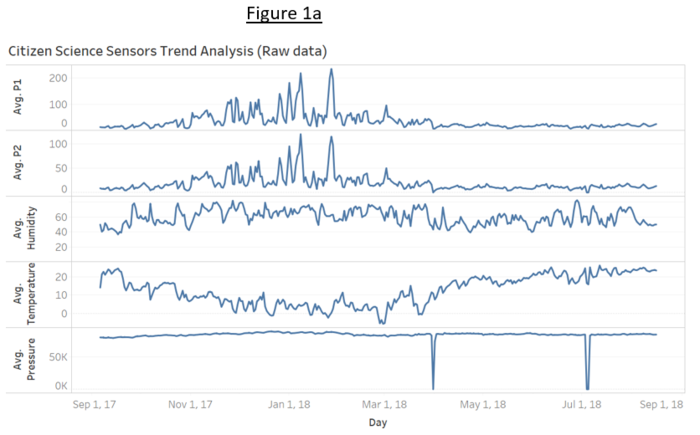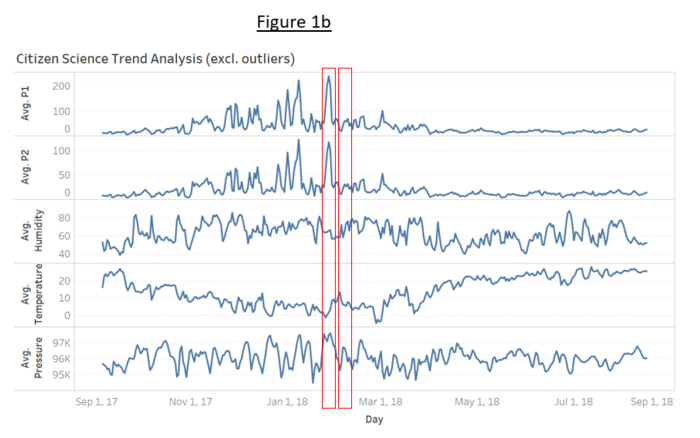ISSS608 2018-19 T1 Assign Lee Yeng Ling Task 3 Insights
Jump to navigation
Jump to search
|
|
|
|
|
|
|
|
Task 3 Insights
Task 3: Relationships between the factors mentioned above and the air quality measures detected in Task 1 and Task 2
Urban air pollution is a complex issue. There are many factors affecting the air quality of a city. Some of the possible causes are:
- Local energy sources. For example, according to Unmask My City, a global initiative by doctors, nurses, public health practitioners, and allied health professionals dedicated to improving air quality and reducing emissions in our cities, Bulgaria’s main sources of PM10, and fine particle pollution PM2.5 (particles 2.5 microns or smaller) are household burning of fossil fuels or biomass, and transport.
- Local meteorology such as temperature, pressure, rainfall, humidity, wind etc
- Local topography
- Complex interactions between local topography and meteorological characteristics.
- Transboundary pollution for example the haze that intruded into Singapore from our neighbours.
In this third task, you are required to reveal the relationships between the factors mentioned above and the air quality measure detected in Task 1 and Task 2. Limit your response to no more than 5 images and 600 words.
Sources & Cause Effect
| Figure 1a above shows the raw readings without excluding the outliers. | Figure 1b above shows the readings after excluding the outliers. It can be observed that Temperature, Humidity & Pressure have inverse relationship with P1 & P2 pollutant. For example, P1 & P2 are highest during winter period when weather is cold. This confirmed the fact that because of higher emissions from domestic heating and more intensive urban traffic. Minimum concentrations are observed in the summer months, when the mixing conditions in the atmosphere are better and the source emissions are reduced. |


